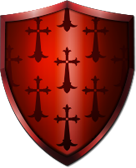Executive Branch
Directing the government falls into the hands of the executive branch, headed by the president of the United States. If a law is created, the executive branch works to carry out the law, and in some cases, the president will recommend new legislation that would be beneficial to the country.
The president can veto laws that they don’t want to be created. In matters of defense and national security, the president is the commander-in-chief and directs all branches of the armed forces. When the time comes to deal with foreign entities, the executive branch represents the United States.
The vice president is also part of the executive branch and is set to take the place of the president should something happen to them. The Cabinet is made up of the individuals who lead various federal agencies. These men and women are also part of the executive branch and serve to assist and advise the president.
- The White House
- Ben’s Guide to the Executive Branch
- The Executive Branch: Federal, State, and Local
- Guide to the U.S. Federal Government: The Executive Branch
- The Executive Branch: Powers of the Presidency
Legislative Branch
Congress is the legislative branch of the United States government. Made up of two groups, the Senate and the House of Representatives, the legislative branch works to create laws. The House of Representatives is comprised of 435 members, each serving a two-year term. States are allotted a number of seats in the House based on their population. All spending bills originate in the House of Representatives.
The Senate has 100 members, two from each state, with each person serving a six-year term. The Senate can approve treaties and impeach government officials who fail to uphold their duties. Sometimes, looking at the list of members of Congress can be like looking at a lawyer directory, since many of the people who serve in this branch have some type of legal background or experience.
- The Legislative Branch (PDF)
- Members of the U.S. Congress
- About the Legislative Branch
- Constitution: The Legislative Branch
- Separation of Powers: Legislative Oversight
Judicial Branch
The Supreme Court is the head of the judiciary branch, with each justice of the Supreme Court holding the position until they step down, pass away, or are removed from office through the impeachment process by the Senate. In these situations, a Supreme Court justice would need to talk to a lawyer to represent them through the proceedings.
There are nine judges on the Supreme Court. One serves as the chief justice, while the others are considered associate justices. Brian Joslyn, our DUI attorney in Cincinnati advised the role of the judicial branch is to interpret laws and make sure that they comply with the Constitution.
- A Brief Overview of the Supreme Court
- The Judicial Branch
- United States Government: The Judicial Branch
- U.S. Constitution: Article III: Judicial Power
- History of the Federal Judiciary
U.S. Government Explained
- How the United States Government Is Organized: The Three Branches of Government: Using information from the Constitution, the site offers information about each government branch as well as a helpful chart to help distinguish them from one another.
- The Judiciary’s Relationship With the Other Branches of Government: All three branches serve to balance each other so that no one branch is more powerful than the rest.
- Harry S. Truman Library: Three Branches of Government: This easy-to-use guide offers a simple explanation of each of the branches as well as a general list of each branch’s members.
- Constitutional Conflicts: Separation of Powers: Sometimes the three branches of government need to keep an eye on each other to ensure that no one part is going against the Constitution of the United States. This site details how this unique relationship works.
- The Legal System in the United States: This worksheet details each of the branches of government with diagrams and charts, while offering exercises to complete to enhance understanding.
- Foreign Policy Roles of the President and Congress: Foreign policy is one area in which the different branches of government need to work together in order to create policies that will help guide the nation.
- The Role of Federal Judges: Their Duty to Enforce the Constitutional Rights of Individuals When the Other Branches of Government Default (PDF): The judicial branch is an important part of the checks and balances of government.
- An Overview of the U.S. Government: Each of the branches is featured on this site. The organization of the article helps to understand the various powers each of the branches possess.
- Italian citizenship by marriage: The United States allows US citizens dual citizenship for those that qualify through marriage, civil union, or birth.
- Columbus Criminal Defense Attorney: The Official United States Columbus Ohio website of The Joslyn Law Firm’s Columbus location which upholds the standards and laws of the Judicial Branch of the government.
Find help with:
- Criminal defense law
- OVI attorney representation
- Domestic violence attorney representation
- Drug crime lawyer representation
- Gun crime law
- Theft crime defense law
- Sex crime attorney representation
This article was last updated on Tuesday, October 10, 2017.



















